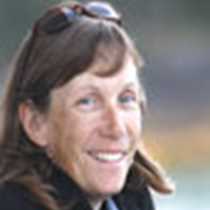Glacier Bay National Park
Today we spent our day traveling and tracking. We followed a path left by another to learn about it. Our subject was once much larger than it is today. It was not living but yet it moved. It was flowing when it left its track, but at the same time it was frozen solid. The track we followed today was that of the glacier that carved Glacier Bay National Park.
When Captain George Vancouver passed through Icy Strait in 1794, the bay that is now Glacier Bay was barely visible. The glacier was at the mouth of the bay and over 20 miles wide. Today we went over 60 miles north of that location seeing the recently exposed landscape coming back to life. At the face of Margerie Glacier, the northern most point of the bay, life on land is just getting started on the newly exposed soils. The life in the ocean is already plentiful enough to support a loud and lively population of gulls. Black-legged kittiwakes, whose nests cling to the nearly barren cliff, wait for the calving ice to stir up the water bringing their food to the surface.
Further down the bay at Russell Cut, a mother brown bear and her two cubs roamed the shore. The face of the glacier sat at this location in 1892. One hundred and fifteen years later, the beach that was once a gravelly plain has a meadow that is thick with grasses and wildflowers, and the alder trees are at their full height and are starting to be overshadowed by the next step in the story, the Sitka spruce forest. This too will give way to other things. Nothing in nature is static, but in Glacier Bay it is very easy to see the speed at which the land changes.
Our final stop of the day has lead us back to Bartlett Cove. Here we walked in forests where the glacier stood just over 200 years ago. The spruce have been in charge here for 50 or more years. The forest is mossy and gentle and green, a peaceful way to end our day.
Today we spent our day traveling and tracking. We followed a path left by another to learn about it. Our subject was once much larger than it is today. It was not living but yet it moved. It was flowing when it left its track, but at the same time it was frozen solid. The track we followed today was that of the glacier that carved Glacier Bay National Park.
When Captain George Vancouver passed through Icy Strait in 1794, the bay that is now Glacier Bay was barely visible. The glacier was at the mouth of the bay and over 20 miles wide. Today we went over 60 miles north of that location seeing the recently exposed landscape coming back to life. At the face of Margerie Glacier, the northern most point of the bay, life on land is just getting started on the newly exposed soils. The life in the ocean is already plentiful enough to support a loud and lively population of gulls. Black-legged kittiwakes, whose nests cling to the nearly barren cliff, wait for the calving ice to stir up the water bringing their food to the surface.
Further down the bay at Russell Cut, a mother brown bear and her two cubs roamed the shore. The face of the glacier sat at this location in 1892. One hundred and fifteen years later, the beach that was once a gravelly plain has a meadow that is thick with grasses and wildflowers, and the alder trees are at their full height and are starting to be overshadowed by the next step in the story, the Sitka spruce forest. This too will give way to other things. Nothing in nature is static, but in Glacier Bay it is very easy to see the speed at which the land changes.
Our final stop of the day has lead us back to Bartlett Cove. Here we walked in forests where the glacier stood just over 200 years ago. The spruce have been in charge here for 50 or more years. The forest is mossy and gentle and green, a peaceful way to end our day.



